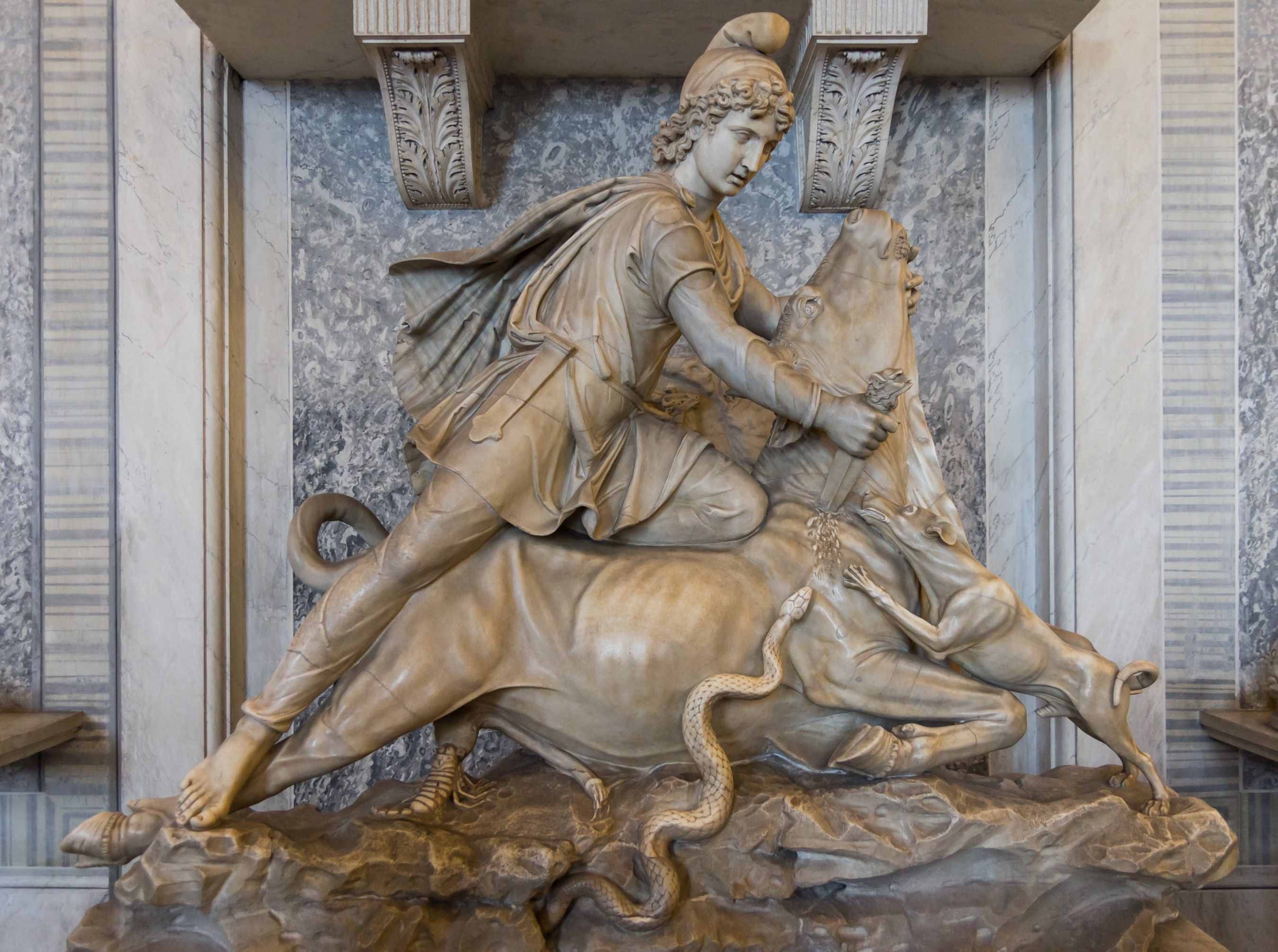
Mithras
Zoroastrian symbol of Christ.
"The Hindus called the Sun SURYA; the Persians, MITHRAS; the Egyptians, OSIRIS; the Assyrians and Chaldæans, BEL; the Scythians and Etruscans and the ancient Pelasgi, ARKALEUS or HERCULES; the Phœnicians, ADONAI or ADON; and the Scandinavians, ODIN...
"MITHRAS was the Sun-God of the Persians; and was fabled to have been born in a grotto or cave, at the Winter Solstice. His feasts were celebrated at that period, at the moment when the sun commenced to return Northward, and to increase the length of the days. This was the great Feast of the Magian religion. The Roman Calendar, published in the time of Constantine, at which period his worship began to gain ground in the Occident, fixed his feast-day on the 25th of December. His statues and images were inscribed, Deo-Soli invicto Mithræ--to the invincible Sun-God Mithras. Nomen invictum Sol Mithra. . . . Soli Omnipotenti Mithræ. To him, gold, incense, and myrrh were consecrated. "Thee," says Martianus Capella, in his hymn to the Sun, "the dwellers on the Nile adore as Serapis, and Memphis worships as Osiris; in the sacred rites of Persia thou art Mithras, in Phrygia, Atys, and Libya bows down to thee as Ammon, and Phœnician Byblos as Adonis; and thus the whole world adores thee under different names." [...]
"Mithras, the rock-born hero (Πετρογενης), heralded the Sun's return in Spring, as Prometheus, chained in his cavern, betokened the continuance of Winter. The Persian beacon on the mountain-top represented the Rock-born Divinity enshrined in his worthiest temple; and the funeral conflagration of Hercules was the sun dying in glory behind the Western hills. But though the transitory manifestation suffers or dies, the abiding and eternal power liberates and saves. It was an essential attribute of a Titan, that he should arise again after his fall; for the revival of Nature is as certain as its decline, and its alternations are subject to the appointment of a power which controls them both...
"Mithras is not only light, but intelligence; that luminary which, though born in obscurity, will not only dispel darkness but conquer death...
"Between life and death, between sunshine and shade, Mithras is the present exemplification of the Primal Unity from which all things arose, and into which, through his mediation, all contrarieties will ultimately be absorbed. His annual sacrifice is the Passover of the Magi, a symbolical atonement or pledge of moral and physical regeneration. He created the world in the beginning; and as at the close of each successive year he sets free the current of life to invigorate a fresh circle of being, so in the end of all things he will bring the weary sum of ages as a hecatomb before God, releasing by a final sacrifice the Soul of Nature from her perishable frame, to commence a brighter and purer existence." - Albert Pike (1871)
"The TAU cross was inscribed on the forehead of every person admitted into the Mysteries of Mithras... Concerning the crucifixion of the Persian Mithras, J. P. Lundy has written: "Dupuis tells us that Mithra was put to death by crucifixion, and rose again on the 25th of March. In the Persian Mysteries the body of a young man, apparently dead, was exhibited, which was feigned to be restored to life. By his sufferings he was believed to have worked their salvation, and on this account he was called their Savior. His priests watched his tomb to the midnight of the vigil of the 25th of March, with loud cries, and in darkness; when all at once the light burst forth from all parts, the priest cried, Rejoice, O sacred initiated, your God is risen. His death, his pains, and sufferings, have worked your salvation." - Manly P. Hall, The Secret Teachings of All Ages